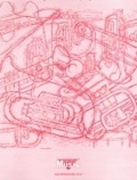We've found 327 matches for your search. Order by
Results
-
 £25.00
£25.00MERRY PEASANTS (Eb Bass and Bb Bass Duet with Brass Band) - Dibb, J.
-
Estimated dispatch 7-14 working days
-
 £89.60
£89.60Csardas (in C minor) (Eb or Bb Bass Solo) - Vittorio Monti
Estimated dispatch 5-14 working days
-
 £89.60
£89.60My Way (Bb Bass Solo) - Claude François
Estimated dispatch 5-14 working days
-
 £89.60
£89.60Cousins (Eb Horn & Bb Bass Solo) - Herbert L. Clarke
Estimated dispatch 5-14 working days
-
 £89.60
£89.60Romantic Blue (Bb Bass Solo) - Dennis Armitage
Estimated dispatch 5-14 working days
-
 £112.90
£112.90Kirbo (Bb Bass Solo) - Eddy Debons
Estimated dispatch 5-14 working days
-
 £152.00
£152.00Devil's Concertino (Bb Bass Solo) - Bertrand Moren
Estimated dispatch 5-14 working days
-
 £124.10
£124.10Tubissimo (Eb or Bb Bass Solo) - Joe Bellini
Estimated dispatch 5-14 working days
-
 £140.20
£140.20Carnival (Bb Bass Solo) - Bertrand Moren
Estimated dispatch 5-14 working days
-
 £124.10
£124.10Tubissimo (Bb Bass Solo) - Joe Bellini
Estimated dispatch 5-14 working days
